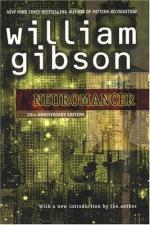|
This section contains 4,691 words (approx. 16 pages at 300 words per page) |

|
SOURCE: Mead, David G. “Technological Transfiguration in William Gibson's Sprawl Novels: Neuromancer, Count Zero, and Mona Lisa Overdrive.” Extrapolation 32, no. 4 (1991): 350-60.
In the following essay, Mead asserts that characters in Gibson's trilogy of “Sprawl” novels—Neuromancer, Count Zero, and Mona Lisa Overdrive—use technology as a means of transcendence, transformation, and liberation.
Some years ago, in a review essay in Isaac Asimov's Science Fiction Magazine, Norman Spinrad urged calling the writers of the nascent cyberpunk movement “neuromantics.”1 In contradistinction to the hostility to technology, the neo-Ludditism, so to speak, which is often attributed to the New Wave writers of the 1960s and early 1970s, Spinrad found in William Gibson, John Shirley, Bruce Sterling, Pat Cadigan, and Rudy Rucker, among others, a “forthrightly high-tech romanticism,” an attitude that embraces “wholeheartedly the real world that science and technology have made, the technosphere, the reality of the last quarter of the...
|
This section contains 4,691 words (approx. 16 pages at 300 words per page) |

|


